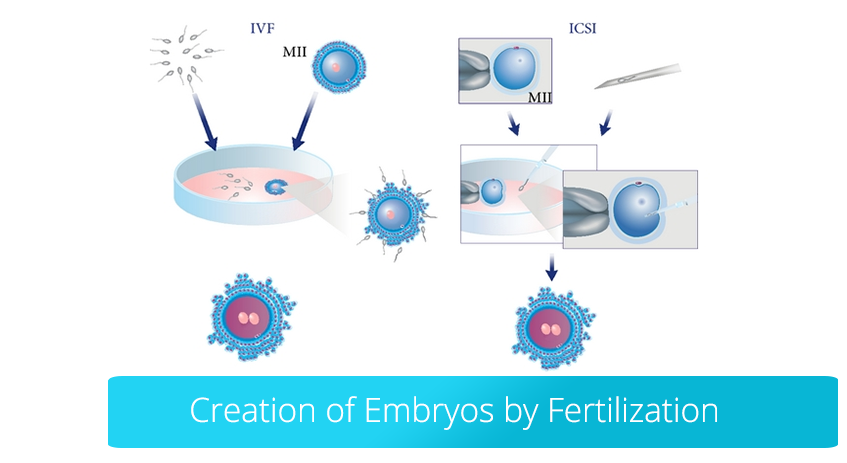The sperm of the man is combined with mature eggs. Sperm and eggs can be placed side by side and natural fertilization can be expected. If fertilization is unlikely, the medical team may decide to inject sperm into the egg. This process is known as intracytoplasmic sperm injection or ICSI. This method is used when it is thought that it may increase the chance of pregnancy.
Fertilization and Fertilization in IVF
On the day of egg collection, fertilization will be done with the sperm taken from the male. The sperm from the male are obtained by masturbation and washed in a culture medium. After the eggs are collected, they are examined under the microscope for their maturity and kept in the incubator for about 2-4 hours.
After the egg cells are collected, they are placed in a culture medium in a special cabinet (incubator) in the laboratory. Meanwhile, the sperm of the spouse is prepared with a special washing technique and healthy sperm are separated.
If the classical test tube technique is to be applied, each egg is left with 20-30 thousand sperm in a specially prepared culture medium and placed in the incubator. In microinjection (ICSI) technique, a single sperm is injected into each egg with a thin pipette.
In the IVF method, after 4-6 hours after collecting the egg cells, the sperm taken from the spouse are left next to the egg cell and the sperm are expected to fertilize the egg. Microinjection method is used when spontaneous fertilization is not expected due to insufficient number of sperm or poor quality of existing sperm. In microinjection method; A healthy sperm is injected into the egg cell.
On the next day after egg collection, you will contact us by telephone to provide information about eggs and sperm. At this point, fertilization occurs in most cases. However, embryo transfer can be done after the fertilized egg normally begins to divide, usually one day after fertilization. Although rare, one of the risks of IVF is insemination. Sometimes the reason is obvious, but often there is no reason. If this happens, follow-up will not be continued. You will be given the opportunity to discuss the meaning of this finding with your doctor or embryo.
After approximately 16-18 hours, it is removed from the incubator and checked for fertilization by microscope. If two pronucleus (one from the egg and the other from sperm) are seen, the egg is said to be fertilized and called zygote. The zygote then begins to divide and divide into cells in numbers 2, 4 and continued respectively. 48-72 hours after egg collection, one embryo has 4-8 cells and can be transferred to the uterus. But sometimes the fertilized egg does not continue cell division and in this case called the arrest embryo, that embryo is not transferred.


Add Your Comment